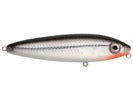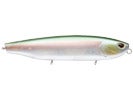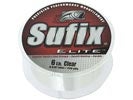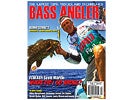
In September when the lakes start to draw down and the nights begin to cool the bass are starting to feed up before the weather turns cold for the winter. Bassmaster Elite Series pro Jacob Wheeler noticed this feeding pattern and shares his thoughts on what lures to use during this time.
Location:
“As the fall comes on, there is fish movement and the bass will start to follow the shad to the back of the creeks on top of the flats and that is one of the biggest things to fall fishing. A lot of fish start to utilize large flats.”
“Everybody talks about the shad going to the backs of the creeks; but I think that is one of the biggest misconceptions. It is true on a lot of lakes; but I think that only focusing on creeks makes people overlook the main lake flats.”
Wheeler covers water quickly looking for active fish in those “types of water” (main lake flats, flat points on the main lake and mouths or backs of creeks). Once he has located active fish in one of those specific types of water, he will fish similar areas throughout the lake.
Wheeler noted that the fall can be a time of year when it is harder to get bit. I’m just constantly moving with my boat in 4 to 8 ft of water, casting shallower,” he said. “You’re fishing a lot of dead water with this technique, but once you find ’em, you’re going to be catching a lot of fish.
“This is the time of year when the fish will school up on a lot of places – in ditches, on little flats in 2 to 4 ft of water and if your lake has grass, realistically that is where it is really going to go down. If your lake doesn’t have grass, it will be all about the ditches, especially the shallow ditches with stumps. I’m looking for anything that will allow the fish to get around some sort of cover on top of the flat to ambush the shad and things like stumps give the bass the best chance at more bang for their buck, when trying to eat shad. This probably the biggest pattern that I really like to run.”
Lure Selection:
Wheeler’s go-to walking bait for a fall topwater presentation is a Rapala #11 Skitter Walk. “It is a little bit larger of a walking bait and if I can get them to bite this one, it is the one that I am going to throw,” he stated. “If the bass won’t eat this, I will adjust with another walking bait.”
For early fall, Wheeler likes to tie on a Rapala Skitter Walk #8. “It is a smaller walking bait and it’s all about match the hatch,” he said. “The fish are feeding on shad that have hatched this same year and they are only about two or three inches long at that point in time. If those little shad are what the bass are schooling on and I use that little Skitter Walk, they will just start clobbering it. This tiny walking bait will be much more effective than a big topwater.”
For situations that would require an oversized presentation, Wheeler throws a Arashi Top Walker 13. Although he has been putting the lure in action for some time, it was only shown to the public at ICAST of this year.
“I will typically use this when I need a larger profile,” he explained. At lakes like Guntersville, Pickwick and Kentucky, the bass feed on gizzard shad, so the larger bait will make a bigger presentation, disturb a little more water and make a little bit more of a commotion.”
Lure Presentation:
Wheeler uses a constant, steady retrieve for his walking baits. “I’m twitching with a little slack,” he said. “When a fish blows up on my bait and it doesn’t get it, I will continue to work it. I think a lot of anglers make the mistake of killing their bait in these situations.
“Think about it. If you’re a shad and you’re swimming on top of the water and a 4 lb bass comes by and tries to eat you, are you going to sit still? Heck no! I look at it the same way with my topwater lures. If a fish blows up on it, I will slow it down, but I will also snap it harder. This will make it look injured, while it’s working side-to-side, but makes it seem like it is still running away from the fish.”
Topwater Gear:
Wheeler suggests a rod with a little bit of tip and lot of backbone to load well. He uses a 7 ft, medium-action. Okuma C3-40X rod with an Okuma Helios TCS 7.3:1 reel. “There is no disadvantage to a high-speed reel with this technique,”he said. “If a fish blows up on my bait and takes it, I have the ability to catch up to ’em.”
His line choice for this technique is 17 lb Sufix monofilament. “This line doesn’t have that much stretch, but it has a little stretch and it still floats because it is mono,” he said. “There are a lot of guys that throw braid and other stuff, but this works real well for me.”
Click Link To Shop: Bass Angler Magazine
Four Seasons On Top: Fall Fall 2015 Bass Angler Magazine (Jody Only pg. 88 – 90)
- 8 colors available
- 10 colors available
- 1 colors available







